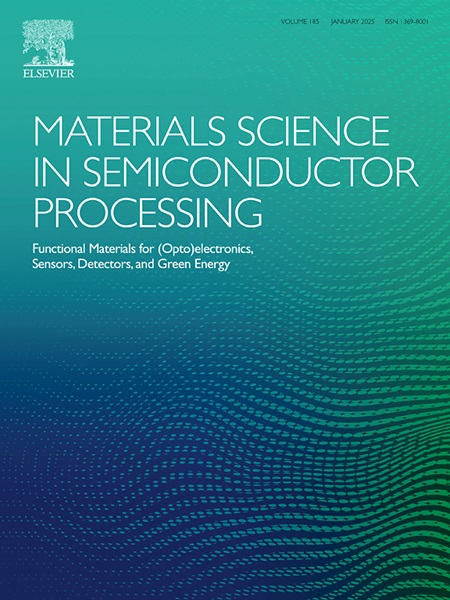用微流控装置合成不同尺寸光子晶体球的光学特性
IF 4.2
3区 工程技术
Q2 ENGINEERING, ELECTRICAL & ELECTRONIC
引用次数: 0
摘要
本研究采用微流控装置,以聚苯乙烯胶体溶液为原料合成光子晶体球(pcb,即球形胶体晶体)。采用t型结微流控装置制备了含有单分散聚苯乙烯胶体的油包水液滴。通过控制连续油相的流量,可以在220 ~ 410 μm之间调节液滴直径。液滴具有良好的单分散性,粒径变异系数(Cv)小于2%。通过仔细地蒸发水滴中的水分,在可见光波段获得了结构颜色鲜艳的多氯联苯和光子带隙(PBGs)。通过增加用于构建pcb的聚苯乙烯胶体的直径,沿[111],[220]和[222]方向的PBG波长发生了红移,这与修正的Bragg定律一致。光子晶体球的球形使得PBG几乎不依赖于光入射角度,在所有入射角度下都表现出一致的向后散射结构颜色(不像聚苯乙烯胶体晶体薄膜,PBG对光入射角度有很强的依赖性)。这些结果为pcb的光学特性提供了有价值的见解。本文章由计算机程序翻译,如有差异,请以英文原文为准。
Optical properties of photonic crystal balls of different sizes synthesized using a microfluidic device
In this study, a microfluidic device was used to synthesize photonic crystal balls (PCBs, i.e., spherical colloidal crystals) from polystyrene colloid solutions. Water-in-oil (W/O) droplets containing monodispersed polystyrene colloids were formed using a T-junction microfluidic device. By controlling the flow rate of the continuous oil phase, the droplet diameters could be adjusted between 220 and 410 μm. The droplets had excellent monodispersity, with a coefficient of variation (Cv) in size of less than 2 %. By carefully evaporating water from the droplets, PCBs with vivid structural colors and photonic bandgaps (PBGs) were obtained at visible wavelengths. By increasing the diameter of the polystyrene colloids used to construct the PCBs, the PBG wavelengths along the [111], [220], and [222] directions were red-shifted, which was consistent with the modified Bragg's law. The spherical shape of the photonic crystal spheres caused the PBGs to exhibit almost no dependence on the angle of light incidence, exhibiting consistent backward scattering of structural colors at all angles of light incidence (unlike polystyrene colloidal crystal thin films, for which a strong dependence of the PBG on the incident angle of light was observed). These results provide valuable insights into the optical properties of PCBs.
求助全文
通过发布文献求助,成功后即可免费获取论文全文。
去求助
来源期刊

Materials Science in Semiconductor Processing
工程技术-材料科学:综合
CiteScore
8.00
自引率
4.90%
发文量
780
审稿时长
42 days
期刊介绍:
Materials Science in Semiconductor Processing provides a unique forum for the discussion of novel processing, applications and theoretical studies of functional materials and devices for (opto)electronics, sensors, detectors, biotechnology and green energy.
Each issue will aim to provide a snapshot of current insights, new achievements, breakthroughs and future trends in such diverse fields as microelectronics, energy conversion and storage, communications, biotechnology, (photo)catalysis, nano- and thin-film technology, hybrid and composite materials, chemical processing, vapor-phase deposition, device fabrication, and modelling, which are the backbone of advanced semiconductor processing and applications.
Coverage will include: advanced lithography for submicron devices; etching and related topics; ion implantation; damage evolution and related issues; plasma and thermal CVD; rapid thermal processing; advanced metallization and interconnect schemes; thin dielectric layers, oxidation; sol-gel processing; chemical bath and (electro)chemical deposition; compound semiconductor processing; new non-oxide materials and their applications; (macro)molecular and hybrid materials; molecular dynamics, ab-initio methods, Monte Carlo, etc.; new materials and processes for discrete and integrated circuits; magnetic materials and spintronics; heterostructures and quantum devices; engineering of the electrical and optical properties of semiconductors; crystal growth mechanisms; reliability, defect density, intrinsic impurities and defects.
 求助内容:
求助内容: 应助结果提醒方式:
应助结果提醒方式:


